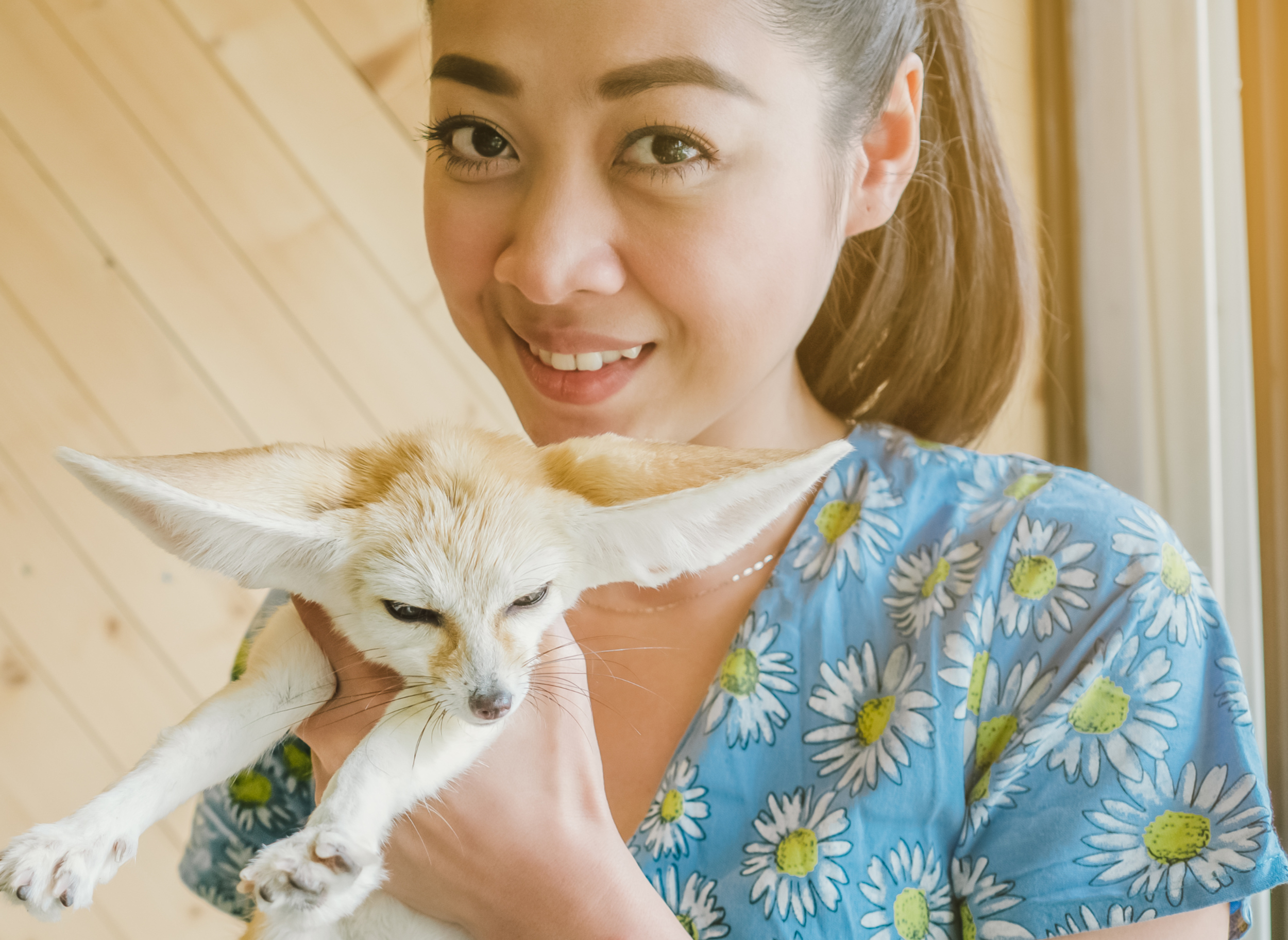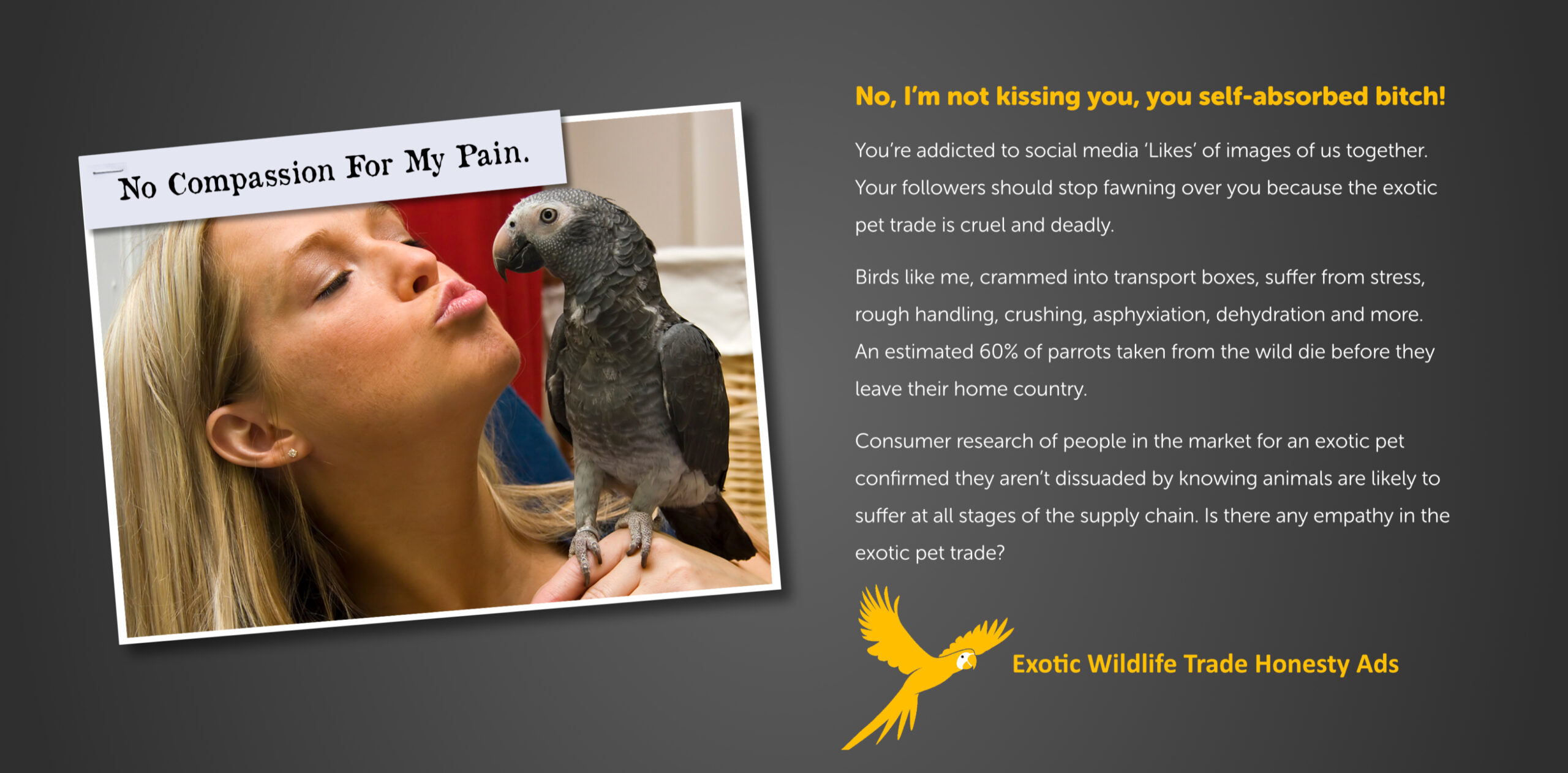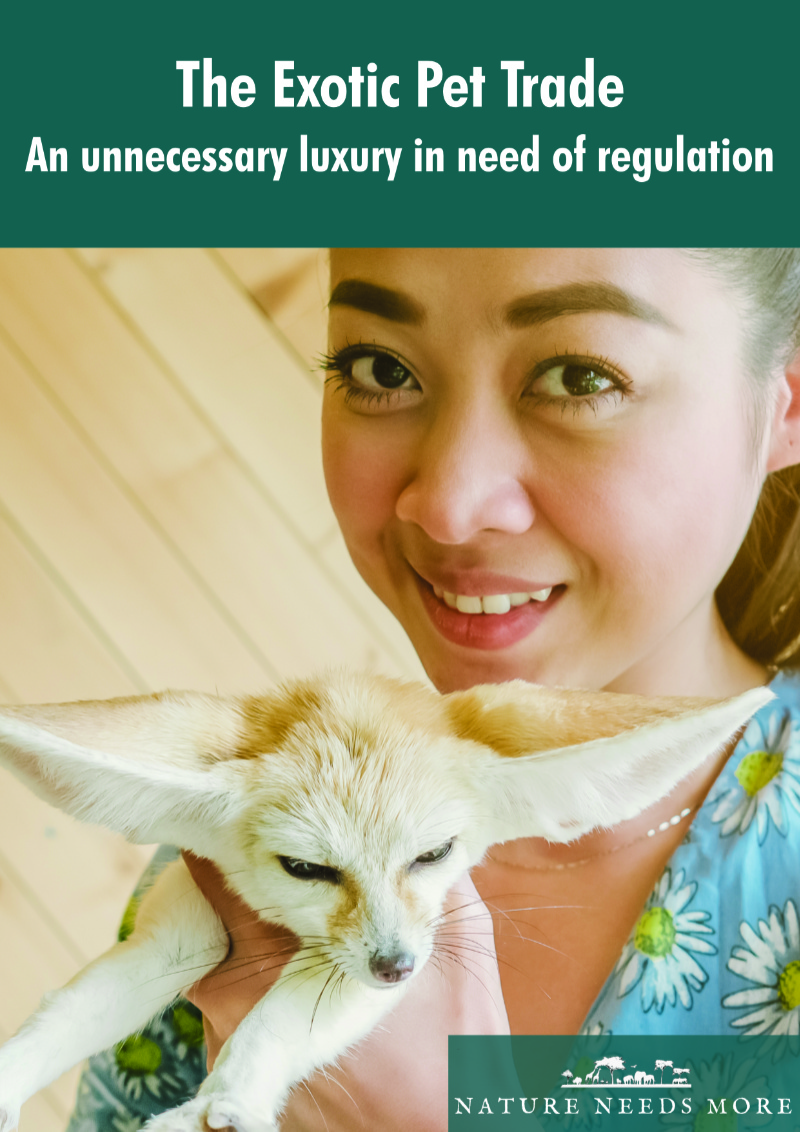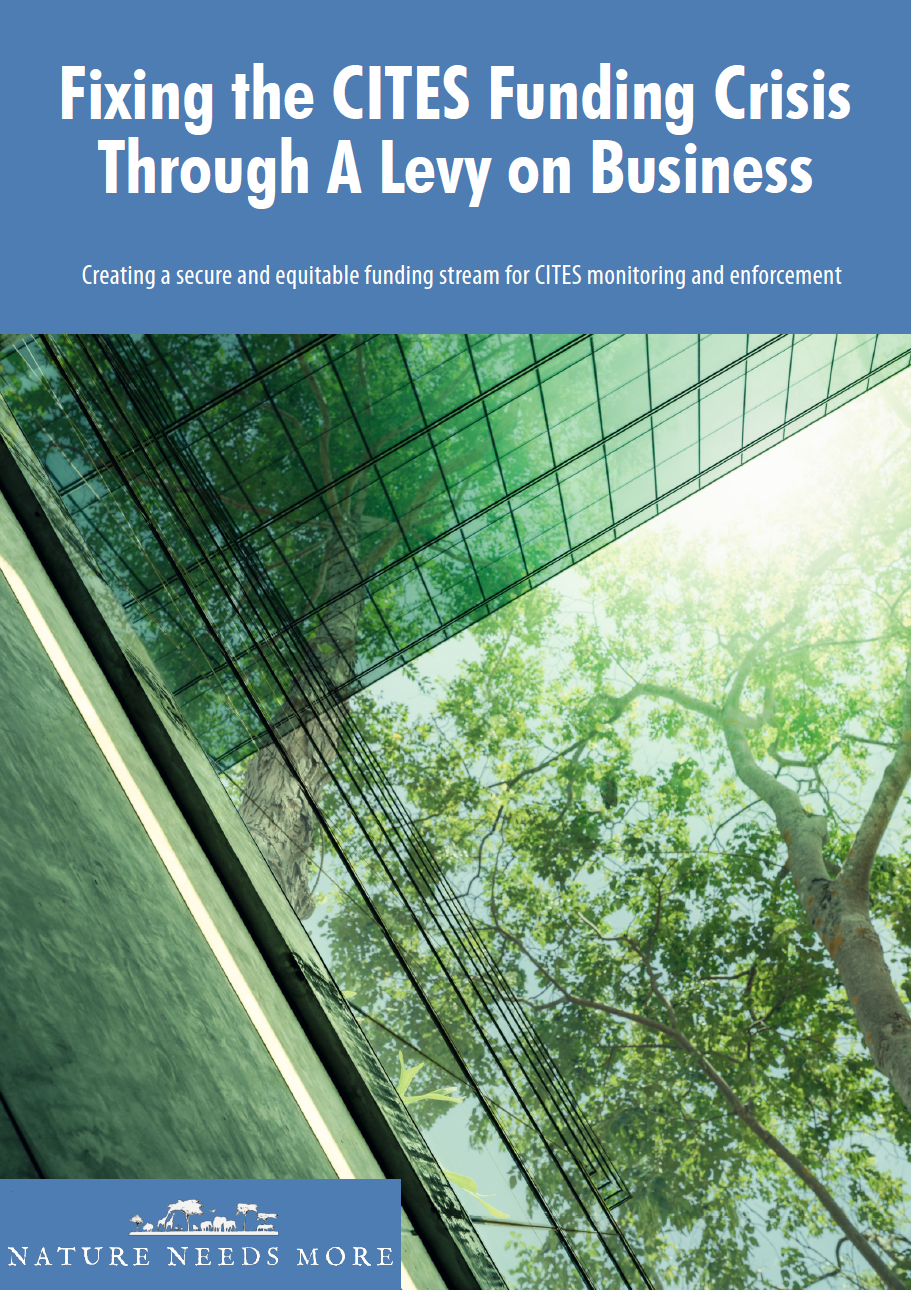
During 2023 and 2024, as I undertook a deep dive into the exotic pet trade (EPT), little did I know where this would lead. Over this timeframe, I wrote a series of articles for Nature Needs More:
- Petted To Death – Australia’s Little Known Contribution To The Extinction Crisis,
- Australia’s Exotic Pet Trade Is Both Surprising And Rising,
- We’re Oceans Away From Saving Nemo,
- The Risky Business Of Heavy Petting, and
- Exotic Pet Trade Risk Reduction Strategies.
In article 5, I said I expected to wrap up the series with a blog exploring the strategies of Demand Reduction, Reverse Listing (Positive Listing) and Cost Recovery. But on reflection, after everything I had found, one final article just didn’t seem enough.
So, I pitched the idea of a Nature Needs More report investigating the exotic pet trade and reverse listing (positive listing) to my co-directors. Since then, the Nature Needs More team has worked to investigate and compile, The Exotic Pet Trade: An unnecessary luxury in need of regulation, which is due to be published in June 2025.
Most things in the modern world are nowadays truly global, not much happens in isolation. This is the case with the exotic pet trade.
Throughout my series of articles on this trade, I have looked at how Australia plays a role in this and why it is important that we understand more about it. We cannot turn a blind eye to the fact that Australia plays a part in this trade and, in so doing, must contribute to the solutions that address the problems I’ve previously outlined.
A 2020 Canadian paper makes the point that while more than 13,000 species are traded in the EPT worldwide, “it tends to be dominated by a relatively small number of popular species, which indicates that great species diversity is not necessary for viable trade.”. The Canadian report concludes, “Positive lists and the precautionary principle in general are almost universally embedded into diverse industrial and professional practices, as well as public activities, and in this regard the exotic pet trade is a peculiarly aberrant exception.”
The exotic pet trade serves as an excellent and chilling example of what is wrong with the trade in wild species and the way it is ‘regulated’ today. Whilst in dollar terms the exotic pet trade is only a very small part of the overall wildlife trade, the fact that the species are traded live, and are (mostly) relatable to people, provides an opportunity to explore many of the assumptions underlying the trade in exotic and endangered species and the regulatory system.
Our main aim with this report is to explore the suitability of using reverse listing (also known as positive lists – which legislate which species are allowed to be traded and owned) to better regulate the exotic pet trade. There is a strong push underway in Europe to switch to positive lists and a number of countries in the EU have implemented at least partial positive lists. All too often they have called for what we shall term ‘basic’ positive lists.
We use the term ‘basic’ positive lists, because they are simply a framework for creating lists of animals that can be kept and the scientific criteria to be used for inclusion on the list. But much more is needed, which we detail in the report.
If ever there was a showcase species to embrace the precautionary principle of reverse/positive listing, then the example of Sylvia’s Tree Frog is maybe all the evidence we need. It is proof that a species can be identified, traded and potentially endangered within a period of two years. This report truly astounded me – Sylvia’s Tree Frog (Cruziohyla sylviae) was first identified in 2018 and found in trade in 2019!
In the last 20 years social media has had a profound impact on exotic pet preferences and trade channels. Social media can create sudden demand for a particular species, often as a result of it being showcased in popular movies. For example, the animated movie Zootopia sparked a demand spike for fennec foxes and Finding Nemo created a demand spike for clownfish. In the report, we look further into this phenomenon in relation to understanding the nature of the demand for exotic pets. Understanding the demand for exotic pets is crucial to getting the regulations right for curtailing the trade. Similarly, understanding consumer desire for exotic pets is critical for creating demand reduction campaigns, which we also explore in the coming report.
In the first case this is about clearly defining the difference between awareness-raising, education and consumer demand reduction; something we first did when we created the Breaking The Brand (to stop the demand for rhino horn) campaigns. Recreating the model for the exotic pet trade is done in the image below.
Demand Reduction (DR) campaigns and projects remain a tool to be considered on a worldwide basis, but it is important to understand the limitations. Firstly, they need to be well designed to ensure effectiveness. My experience in the world of rhino conservation has highlighted two things. Poorly designed campaigns are not only a poor investment but also provide the proponents of trade with the opportunity to say customers can’t change.
The challenge faced for demand reduction campaigns was illustrated in my first article Petted to Death. The article I referenced was 2016 research undertaken by World Animal Protection and WildCRU, from Oxford University’s wildlife conservation research team. In this study, information about animal welfare and conservation concerns were shared with consumers in the market for an exotic pet, to see if this would make people think twice about their purchase. The results were surprising in that most respondents said that even if the animals were endangered or were going to suffer while being caught and transported, they’d buy them anyway. “The effects on the animals themselves weren’t persuasive in terms of changing attitudes,” said Neil D’Cruze, one of the researchers.
This is why most demand reduction campaigns fail, because the creators assume exotic pet owners are intrinsically motivated to change and just need to be educated about the negative impacts of pet ownership on the animal they supposedly care about. This is plainly not the case. As a rule, campaigns need to create health or status anxiety in the consumer and not just illustrate the problem. As a part of the upcoming report, Nature Needs More has created the Wildlife Trade Honestly Ads Campaign. Much of the focus in the first instance is the exotic pet trade:


A number of times I have mentioned the constraint costs play in developing and rolling out technologies to combat illegal trade, managing the legal trade, improving transparency through e-permitting or other data collection systems or investigating crime and enforcing laws in relation to wildlife trade both legal and illegal.
The fact is, the EPT is a luxury trade and as such the costs associated with all these necessary steps should rightfully be borne by those who are benefitting from it and not by society in general. How this can be done is outlined in an earlier Nature Needs More report, Fixing the CITES Funding Crisis Through a Levy on Business.
If the exotic pet trade was moved to a reverse (positive) listing model, all this trade would be regulated by CITES. In this funding report Nature Needs More expands on our proposal to put a 1% levy on the value of commercial imports of Appendix I and II listed species into the major import markets, which we first introduced in our 2021 report, Modernising CITES – A Blueprint for Better Trade Regulation.
This would create a secure and equitable funding stream for CITES monitoring and enforcement.
Such a levy could be used to fund the REAL costs of regulating this trade and in a manner that ensures that the risks we have identified with the EPT are appropriately assessed and mitigated BEFORE further species loss, zoonotic outbreaks, public health events, poor welfare outcomes, invasive species’ release or biosecurity concerns occur.
Throughout my series on the Exotic Pet Trade and Australia’s involvement in it I’ve attempted to shine a light on an issue many of us on our island continent know little about. Like an ostrich maybe, our Down Under view has blinkered us to the reality of wildlife trade for the EPT. Be it the scale of the worldwide trade, the involvement we have in it or the risks it presents.
I would argue that we can do better in our leadership as a country in addressing the risks wildlife trade such as the EPT presents to us as a nation but more particularly the threat it poses the world.
These threats are even greater if you look at the trade of biomass in general!
As such, I am delighted to have been involved in the research and writing of this upcoming report on the exotic pet trade.
To conclude I would ask the question, in the case of the EPT, is it time to start developing management systems and laws that move past the protection of human desire but rather respect the right of all species to have a place on this earth that is more than just as playthings for the most dominant species on the planet? In Australian vernacular, is it time to give nature a, “fair go”?
If you would like to receive the report, The Exotic Pet Trade: An unnecessary luxury in need of regulation, when it comes out in late June 2025, please don’t hesitate to contact me via: cameron@natureneedsmore.org



